




































Those of us who live, work, and play in Central Oregon know that the place has a special spirit. But that spirit can be hard to define. Part of it is the landscape; how can we not be exalted by the magnificent mountain vistas, the soaring pines, the rushing waters of the Deschutes, Crooked, and Metolius rivers?
There’s something else, though, something ineffable, something that brings out the best in people, something that lures people of a certain spirit to the region. Maybe we don’t have to nail it down; we don’t need to bottle it up and sell it like a classic Central Oregon beer, after all. But, still, we seek to identify it.
In crafting the stories you find in these pages, it becomes clear that the spirit of Central Oregon has to do with two related qualities: a spirit of adventure, and a high degree of resilience. This region attracts people who are willing to take a chance on themselves, to take risks. Maybe those risks are found at a poker table, maybe they’re found in an entrepreneurial venture, maybe in something as fundamental as trying to grow a crop in a fickle and challenging climate. If you’re going to be a risktaker, it pays to be resilient, because you’re going to take some hits. In these pages, you will find stories of people who have faced great adversity — and made something inspiring out of it.
In the Old West, that kind of resilience was called grit. Folks in Central Oregon have it — and it’s a fine thing to behold.
Jim Cornelius, Editor in Chief editor@nuggetnews.com
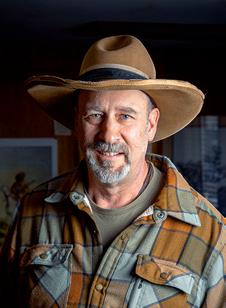


•Pavers: patios, paths, driveways


•Water features: ponds, bubblers wate rfalls s
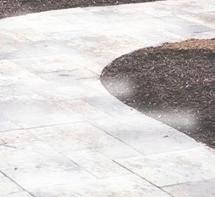


•Pergolas and patio roofs
•Decking: wood and Trex composite
•Fire features: propane, natural gas, wood
•Outdoor kitchens and living areas
•Pole barns and ho rse shelters
•Interior and exterior remodeling









— By Bill Bartlett —

Much has been said and written about the conflict between ranchers who feel threatened by wolves and the myriad environmental activists who advocate for increasing the wolf population.
The legal tension between livestock producers and regulators continues to this day, an argument that shows no sign of abating. Exaggerations by both sides of the debate are routine with each side accusing the other of overstating or understating the impact of wolves in rural and exurban areas.
At core is the matter of predation — livestock losses from wolf attacks. There is a somewhat rigorous protocol for ranchers to be compensated for their losses, but even were they to be paid full market value for any loss, solely on their word, most — not all — ranchers would still ask for elimination of wolves, citing other less obvious losses like underweight and diseased stock stressed by stalking wolves.
Ander Rhoads is a 14-year-old student in Sisters who has a passion and curiosity for wolves. He told Spirit of Central Oregon , “Growing up, I loved 4-H and the outdoors. As a young kid,
predators killing my chickens really impacted me. I spent a lot of my time trying to keep predators out of my coop. Along with loving tracking in the wild, I was naturally led to a fascination with predators. Studying for a week in sixth grade with wolf biologist and author Rick McIntyre in Yellowstone helped me focus my interest on wolves.”
Asked where he saw his career as an adult, he said, “When I grow up, I want to live in a rural area with a job relating to managing wildlife where I am outdoors as much as possible, but the specific job will depend on what the community most needs at that time.”
When Spirit of Central Oregon asked what he wanted people to know about wolves, he said, “The most important thing for people to know about wolves is how much misinformation exists about this species, so they should always try to sort out facts from stories. I gather my own information as much as I can and then try to talk directly to people who have had actual experiences.”
Rhoads hopes his attitude will lead to further reconciliation between wolves and their human neighbors. He shows a certain wisdom uncharacteristic for his age.










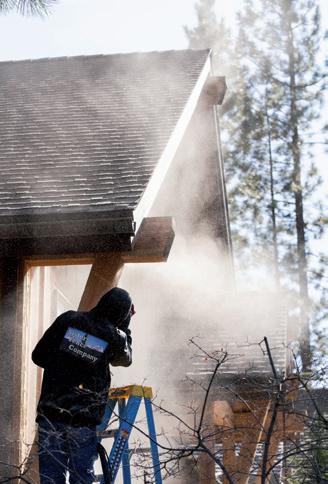

































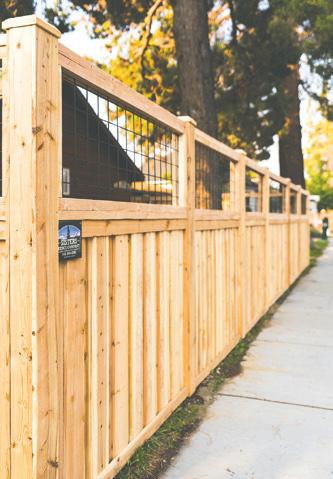









Gray wolves were once in abundance throughout Oregon. Elimination of wolves began shortly after the arrival of European settlers.
By 1947 the last remaining wolf in Oregon had been killed under the auspices of a government funded bounty program. The state remained wolf free until 1999 when a lone wolf swam across the Snake River from Idaho into Oregon. Unceremoniously the wolf was darted and taken back to Idaho.
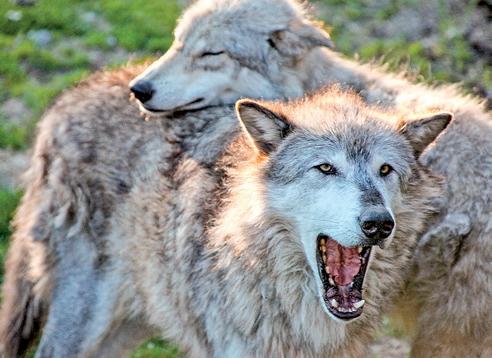
livestock animals confirmed injured by wolves.
Two others crossed the river and were killed, one by poaching and the other by a motor vehicle on I-84. These events spurred a years-long, controversial effort to restore wolves to Oregon and by 2011, the first Oregon breeding pair — the Imnaha pack in Wallowa County — produced the wolf known as OR-7 which became famous worldwide for his lengthy journey to California where, with a female companion, they established the first pack in California in nearly 100 years.
The wolves in Oregon today are part of the Northern Rocky Mountain wolf population. They are descendants of wolves that naturally recolonized northwest Montana starting in the early 1980s, and wolves captured in Canada and released in Yellowstone National Park and Idaho in the mid-1990s.
The management of wolves in Oregon and the source for nearly all available data is Oregon Department of Fish & Wildlife (ODFW). Their most current report for the year 2024 offers a minimum known count of wolves at 204, up from 178 last year. Twenty-five packs were documented, up from 22 last year, and 17 of those packs met the criteria as breeding pairs, with another 18 groups of two or three wolves also identified.
As of December 31, 2024, 528 livestock or domestic animals are confirmed to have been killed by wolves in Oregon, ODFW says, with other
Forty-six Oregon wolves have been killed by ODFW or authorized agents in response to chronic depredations of livestock between September 2009 and December 2023. In all situations, livestock producers and wildlife managers first tried a variety of non-lethal measures to avoid and/or reduce wolf-livestock conflict. In addition, four wolves have been killed by livestock producers as they caught wolves in the act of attacking or chasing their livestock or working dogs.
ODFW began taking an annual census in 2009 and reported 14 wolves in two packs of which one was a breeding pair. None were in Central Oregon.
In Central Oregon there are three areas of known wolf activity (AKWA). The Warm Springs pack produced two pups in April of 2023 that survived until the end of the year and were


documented as a breeding pair. There are currently believed to be seven wolves in the pack.
Near the county line is the Upper Deschutes pack who spend time in Klamath County. Five wolves were documented in the Upper Deschutes Pack during the 2023 winter count, including one pup.
Illegal wolf killing
The most talked-about group in Central Oregon is the Metolius pack, who spend much of their time in Jefferson County, near Camp Sherman. ODFW has evidence of three remaining pups from four born in April of 2024. It is believed that the female will produce more pups during the April 2025 cycle.
On March 10 this year, the pack’s alpha male was killed by poachers near Sisters, igniting a firestorm of anger. To date, rewards of more than $30,000 are offered for any information that leads to an arrest, criminal conviction, or civil penalty assessment. Rhoads has been tracking surviving members of the pack while urging both sides to better understand each other. His mission is to help livestock owners learn the various non-lethal techniques available to protect their herds.

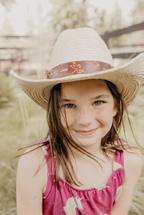
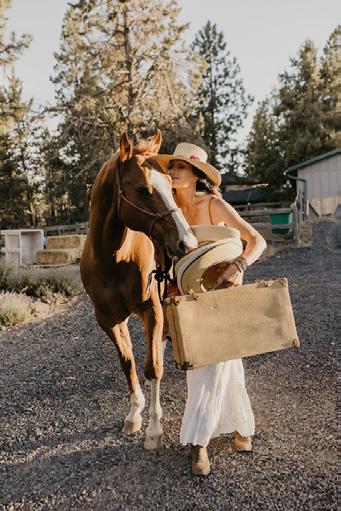



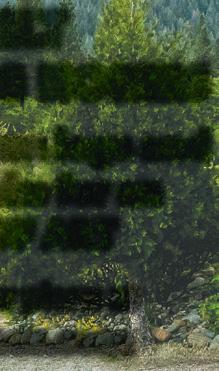






STORY & PHOTOS BY MATT VAN SLYKE

With production set to begin in a matter of months, Samson Sky’s Switchblade vehicle promises to transform regional travel by seamlessly transitioning from road to sky.
Bousfield, an architect and engineer, has spent 15 years refining his company’s signature vehicle, the Switchblade.
“We’re selling a dream,” Bousfield explained during a recent interview at the company’s new research and development facility in Prineville. “Our goal is to catalyze a new lifestyle for people who value their time.”
The Switchblade, aptly named for its design featuring folding thrusters, wings, and tail, is classified as an experimental aircraft for flight and a motorcycle for roads, allowing Samson
In the high desert, a revolution in personal transportation is taking shape. Samson Sky CEO and founder Sam Bousfield’s long-awaited, futuristic vision is ready for takeoff... Central Oregonians will soon be making hundreds of flying cars.
Sky to navigate the complex regulatory landscape that has stymied previous flying car attempts.
“We’re operating in the biggest box we can think of, business-wise,” Bousfield said. “The experimental aircraft category has only one rule: the owner has to build 51% of the vehicle. And as a three-wheeled vehicle, we’re classified as a motorcycle federally, which has much simpler regulations than cars.”
The first flying prototype took flight on November 5, 2023, in Moses Lake, Washington. The plane performed beautifully but its single-ducted fan was producing too much drag, and the propeller wasn’t as efficient as planned.
“We were hoping to get into
production with this, but when we saw that wasn’t going to happen, we figured, ‘Okay, then what do we have to do to make something that can be high-performance in both modes?’” Bousfield said.
Changes include a sleeker body and twin, multi-blade fan thrusters placed higher to reach cleaner air flow. A scale model was tested in April:
“We met our speed numbers in the wind tunnel, so it worked out really, really well. We’re very happy with it.”
The new-and-improved Switchblade will cruise in the air at 160 mph with a range of 450+ miles. On the ground, it’s designed to meet highway speed requirements, with a top speed twice as fast. Bousfield emphasized that it will drive like a sports car,

and drivers will fuel its hybrid electric engine with unleaded at gas stations.
Safety has been a paramount concern. The vehicle incorporates car-like features such as a crumple zone, side-impact protection, and a roll cage. Bousfield also highlighted a unique advantage:
“If you encounter bad weather while flying, you can simply land and continue your journey by road.”
The transition from road to sky mode takes approximately three minutes and must be done while stationary.
“You’ll see a board full of green lights to say everything’s good,” Bousfield explained. “But pilots always train to do a walk-around and visually inspect everything before takeoff.”
Samson Sky has developed a novel approach to meet the 51% build requirement for experimental aircraft. Instead of having customers work on an assembly line, they will operate computer-controlled machines to produce carbon fiber parts over the course of a week.
“We train people on four different machines. It’s very simple — you learn
how to safely operate it, stand in a certain area, and push a button. The machine does the work,” Bousfield said.
This approach satisfies FAA requirements and ensures high-quality parts production.
Professional staff will then complete the final assembly, maintaining stringent safety standards.
Recognizing that many potential customers are not currently pilots, Samson Sky is also developing a comprehensive flight training program. This includes a state-of-the-art flight simulator housed in a dome originally built for F-35 fighter jet training.

Bousfield explained.
“We’ve adapted it for our use,”
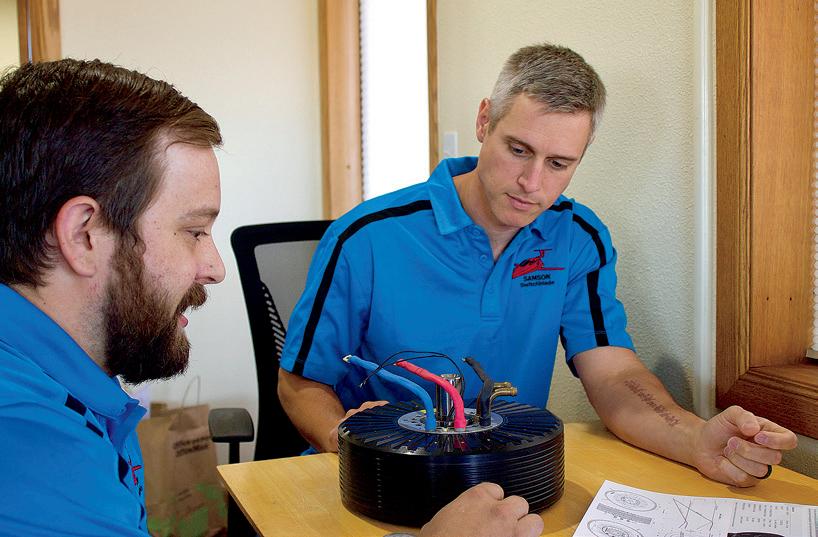
“It’s a fully enclosed, 180-degree vision screen with Dolby surround sound. You sit in an actual cockpit with the same flight instruments we’ll use in the Switchblade.”
Samson Sky is now preparing to build three working prototypes. These Switchblades will undergo rigorous testing to identify and address any potential issues before full-scale production begins.
“We’re trying to break them, essentially,” Bousfield said. “We want to spot the weak points before we’re hundreds of vehicles down the road in production.”
The company is currently in a Series A funding round, seeking $15 million to complete this crucial phase. Bousfield estimates that a total of $79 million will be needed to reach full production capacity.
The Switchblade is Samson Sky’s flagship product, but Bousfield hinted at plans for additional vehicles in the future.
“We have several more vehicles that will come out over the years,” he said, though he was careful not to divulge specifics.
Bousfield sees the Switchblade as a bridge between our current groundbased transportation system and a future where air travel becomes commonplace for short- to medium-distance trips.
“As an engineer and architect, you can see that future where we’re mostly in the air,” he mused. “But the trouble is how do you get from where we are now to that future? That’s what we’re trying to do — bridge that gap and make it useful now.”
Samson Sky has partnered with Composite Approach in Redmond for
crucial components. Local machine shops and the Prineville and Madras airports have also played significant roles.
As production ramps up, the company plans to establish multiple Builder Assist Centers and flight training facilities, potentially bringing additional jobs and economic activity to the region.
“We’d love to have more backers from Oregon,” Bousfield said. “We have a soft spot for the state. My wife and I moved here nine years ago because of the carbon fiber expertise in the area, and we’ve found the atmosphere and people to be fabulous.”
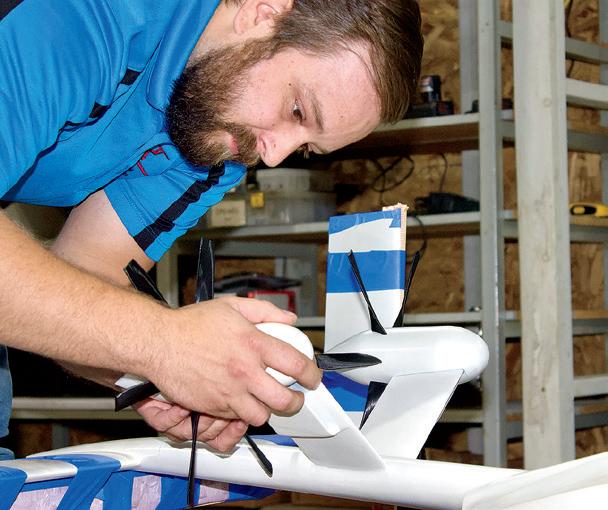
While you don’t need a pilot’s license to buy a Switchblade, you will need one to fly. To reserve a $170,000 Switchblade VFR or $195,000 Switchblade IFR kit, visit www.samsonsky.com.

BY JIM CORNELIUS | PHOTOS BY CODY RHEAULT

Service to country comes at a cost.
Magnus Johnson, a U.S. Army Special Forces veteran who served multiple combat tours in Afghanistan and Iraq, understands that cost. It is reflected most starkly in a commonly cited statistic: 22 military veterans commit suicide each day. That statistic hit home for Johnson when a friend, an Army officer, took his own life.
“He was always asking me how I was doing,” Johnson recalls. “I never asked him how he was doing.”
Out of a desire to honor service and sacrifice, Johnson, his wife, Sara, and veteran colleagues built Mission 22, a nonprofit based in Central Oregon that reaches across the nation to provide personalized support and resources to help veterans and their families thrive. Mission 22’s programs help veterans move beyond self-defeating trauma-based reactions into what they term “post-traumatic growth.”
Through a rigorous, long-term
program of trauma-informed coaching, deep reading, physical exercise, meditation and spiritual practice, Mission 22 helps veterans and their families recover from trauma and build resilience.
“I wanted it to be this transformative journey that was self-driven,” Johnson explained.
Magnus’ own journey began with the September 11, 2001, attacks by al Qaeda terrorists on the World Trade Center in New York City, and on the Pentagon in Washington, D.C.
“I didn’t want to go to Army to get a career,” Johnson said. “I felt a calling to serve when the Towers got hit.”
Johnson served at the tip of the spear, as a Special Forces operator — a Green Beret. He served for eight years, with multiple combat deployments.
Like many veterans, he struggled to reintegrate into civilian life after his service. He says that those transition
struggles swirled around identity and purpose. He notes that pre-modern cultures often had rituals to reintegrate warriors into their society — rituals that are lacking in a complex, fast-moving modern world. The abrupt transition from a tight-knit, mission-driven military community into an atomized and often isolating civilian world has been disorienting to many veterans, and a sense of isolation can make it hard to process the traumas of war. Johnson himself felt this.
“I got resentful and kind of bitter,” he said.
He felt called to do something. Living in Nashville, Indiana, a town noted as an arts colony, his thoughts turned naturally toward creating a sculpture as a memorial. He had no pedigree as an artist, but the idea took hold. The town had already been looking for a large-scale art installation to represent the community, and they were willing to work with Johnson.

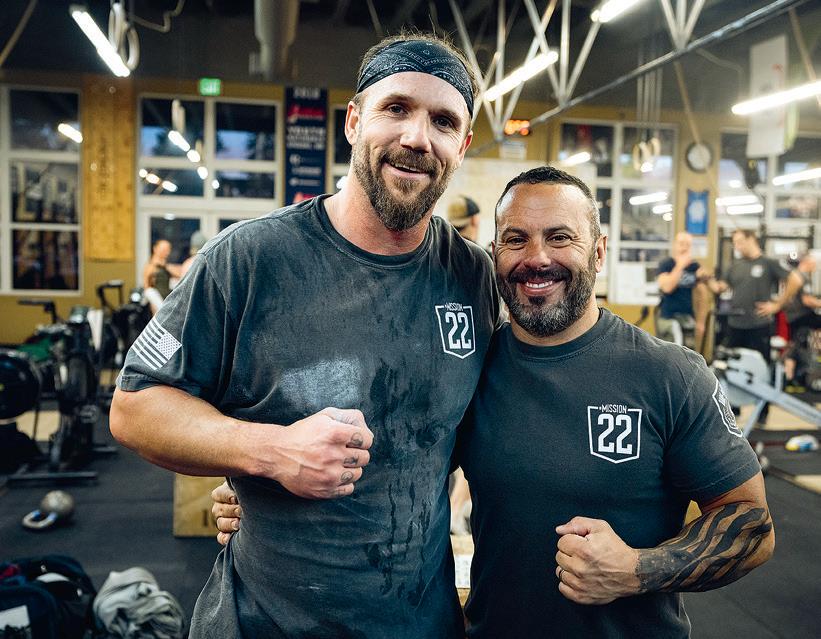
“I had to kind of build a company to do the thing that I wanted to do,” Johnson recalled.
The Mission 22 team worked with the town over the course of a year, with veterans and civilians side-by-side, to create the artwork before dedicating it in 2014. Another memorial followed. The War At Home Memorial was dedicated in 2022 on First Nations land in Broken Bow, Oklahoma, and features the likeness of an American soldier who lost his battle to post-traumatic stress.
Johnson refers to the monuments as “a love message; a testament. I wanted to build something that would last.”
The projects garnered national attention and support — and Mission 22’s mission shifted and grew.
Magnus’ wife, Sara, has been an integral part of Mission 22’s journey since its inception.
“I saw this shift happening in him, and I was going to support him in any way possible,” she said.
Her support for Magnus models the transformative impetus that Mission 22’s programs seek to instill.
Key to Mission 22’s philosophy — and its success — is subverting the trope of the “broken veteran.” Damage and trauma are real — but leaning on them as an identity is destructive to self, family, and community.
“People get away with stuff that’s not good for them,” Sara said.
Mission 22 offers its Recovery + Resilience (R+R) programming for spouses as well as for veterans.
“How do you support without being enabling?” Sara asks rhetorically. “Your family has something going on. It’s not just your spouse that has something going on. It’s important that they learn about co-dependency.”
Mission 22 Executive Director Misha Knea emphasizes that the work is oriented toward post-traumatic growth.
“You can start over,” she said. “You can be something else.”
Magnus likens the state of many veterans facing post-traumatic stress and service-related injury to a broken hand in a cast. A cast may be necessary for a time in order to heal an injury. But if the hand is left in the cast too long, muscles atrophy, strength disappears, and the hand withers. For a veteran, seeing him or herself as “broken” can become a habit, an easy way of avoiding accountability for their own recovery.
Magnus says the message of the program is: “Don’t rest in the path of least resistance.”
The R+R program is a 12-month series facilitated by trained post-traumatic growth facilitators and health coaches. Those involved engage rigorously with books that challenge

“It wasn’t enabling; it wasn’t false belief,” Magnus said.

and help build a constructive outlook. Nutrition and supplementation is strongly emphasized. A gym membership is mandatory, because physical exercise is critical to building resilience.
“No going to the treadmill by yourself,” Magnus said.
The goal is to find community in a gym with like-minded folks (see “Building strength for the mission,” page 16)
Meditation is part of the program, and building healthy sleep hygiene is important. While there is no specific spiritual path presented, participants are encouraged to explore their spiritual needs. The program does not offer alcohol or substance use counseling — but sobriety is strongly encouraged. Many participants engage in programs like Alcoholics Anonymous before participating or running concurrently with R+R.
The program is designed to enhance treatment for more acute issues, as well.
The purpose is “working with a health coach to work on your health goals that you want to achieve,” Magnus said.
Participants come through the program better able to understand and articulate what they are experiencing, and with practical tools that help them manage their response to ongoing stresses.
The Johnsons moved to Sisters during the COVID-19 pandemic, seeking the kind of community that they understand as vital to human thriving. They have found no hurdles in operating a national nonprofit out of a small town in Central Oregon. They have built a team and community around shared values.
“We want people with more community values within our company, because we have to be who we’re marketing,” Magnus said.
Values and ethics are primary, according to Sara.
“Everything else can be taught,”
she said.
Magnus and Sara say that they are humbled and grateful for the support that Mission 22 has garnered in Central Oregon and beyond. Contributions to the program are vital to continuing to serve veterans. Everyone who is in line for the program gets in.
They note that the needs they are seeking to address are not confined to military veterans. Problems of isolation, poor health, lack of identity, community, and purpose are a broad societal issue. The kind of work that Mission 22 promotes in its R+R programming can benefit anyone willing to take responsibility and accountability for improving their well-being.
“This is what I would like everyone to know,” Magnus said. “The issues that are affecting veterans are affecting us all.”
For information on Mission 22 programs, visit www.mission22.com/ programs.

Ryan Hudson of Level 5 CrossFit in Sisters first connected with Magnus Johnson as a coach when Johnson started working out at the gym in 2021. Johnson had service-related injuries and was a bit banged up, so Hudson helped him devise a program to help him rebuild his strength and fitness.
The men became friends, and Johnson shared with Hudson his work with Mission 22.
The men conceived of an event that would bring together important elements of the Mission 22 ethos: physical fitness as a path toward recovery and resilience, along with a sense of community and belonging that comes from people striving together. The Mission 22 WOD (“workout of the day” in
CrossFit parlance) is comprised of a grueling set of exercises — each requiring 22 reps.
The WOD is a partner workout. While some extremely fit people could handle the workout alone, it’s set up so that it requires a partner — someone to share the burden. The first Mission 22 WOD was conducted in the wee hours of the morning in November 2024. The event drew 33 men, and 30 women, who performed a separate set after the men, while dozens of spectators lined the gym. The participants each made a $22 donation to Mission 22.
Certain CrossFit WOD become standard in the repertoire of gyms across the nation. One such WOD is the “Murph,” a challenging workout built to honor Navy SEAL Lt. Michael
Murphy, who was killed in action in Afghanistan in 2005. It is a tradition among many CrossFitters to do the Murph WOD on Memorial Day Weekend.
Hudson and Johnson hope to see the Mission 22 WOD catch on in similar fashion.
The next Mission 22 WOD is scheduled for Memorial Day at 9 a.m. at Level 5 CrossFit. The gym will also offer the Murph later that day.
The spreading enthusiasm for the workout is gratifying, since it embodies the values that are at the core of Mission 22.
“Can something big be done from something small?” Johnson asked rhetorically, reflecting on the adoption of the WOD. “The answer is yes.”

The Mission 22 WOD is set up to require a partner — someone to share the burden with. The next Mission 22 WOD is schedule for Memorial Day, Monday, May 26, 2025, 9 a.m. at Level 5 CrossFit in Sisters. For information email coach@crossfitsisters.com.



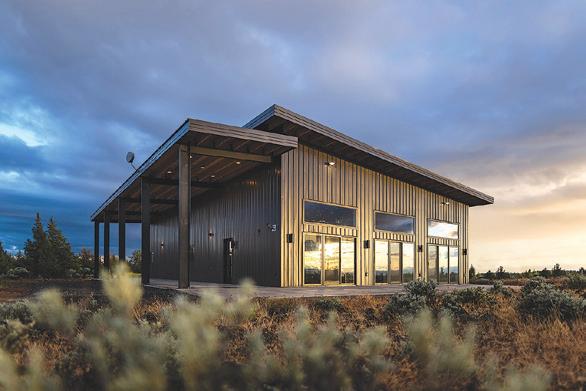


By Jim Cornelius

There’s something going on with our kids. We sense it; we see it in the way they connect — or don’t connect — with the world. We know that they spend a tremendous amount of time on screens — phones, mostly — and that they seem to be suffering as no generation before from anxiety and other mental health issues.
They are what social psychologist Jonathan Haidt dubbed “The Anxious Generation.” They have been “rewired” by their intimate connection to technology — and often hobbled by a well-meaning but ultimately destructive urge among parents to protect their children from challenging experiences.
There is a movement afoot to push back against these negative trends — a movement among parents, educators, and children’s advocates. One of the key tools in reversing those trends is summer camp.
As activist Steve Baskin argues, “summer camps have the exact kinds of features needed to help reverse the two trends that have driven much of the mental health crisis: overprotection in the real world and under-protection online. I believe that camps can — and should be — part of the solution because they take devices away from young people and place them into enriching, face-to-face communities that foster mental, physical, and emotional strength.”
Big Lake Youth Camp has been serving Oregon youth since its founding in 1962 by the Oregon Conference of Seventh-day Adventists. The camp is located in the Willamette National Forest, and operates under a special use permit with the U.S. Forest Service.
Big Lake Youth Camp offers exactly the kind of experiences that Baskin
and Haidt identify as vital to restoring youth to their natural playful and connected state.
“Our youth camp six-day sessions are for youth ages 7–17, and five-day family camp sessions for those of all ages,” said Liesl Schnibbe, associate director at Big Lake Youth Camp. “Campers engage in watersports, riding horses, archery, ceramics and pottery and other crafts, and more at our base camp. We also run expeditionary or outpost camps that focus on whitewater rafting, rock climbing, or what we call Ultimate, which is a combination of backpacking, rafting, and rock climbing.”
Big Lake is known for a culture of love and acceptance; campers find belonging and community. Staff are intentionally trained to build and protect a shame-free environment for kids. Using what Schnibbe describes


as a “growth mindset approach,” young people are challenged to confront their fears and utilize stress as a helpful tool for improvement and building resilience.
“Unplugging” is an important part of the camp experience. Staff recognizes that connection can be important to both kids and their parents, and they accommodate that desire when needed — but the goal is to get away from the electronic distractions for an extended period of time.
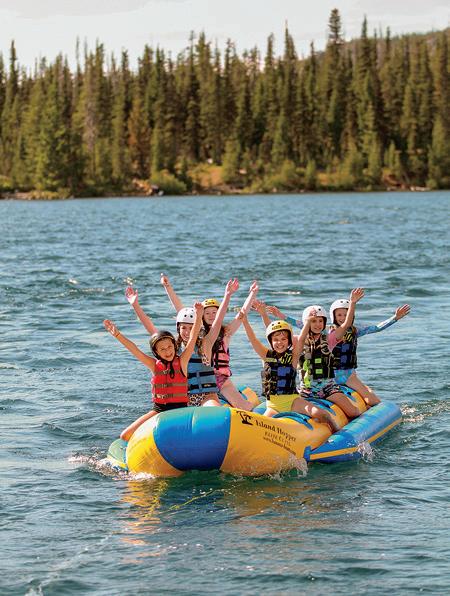
“We ask that campers not bring cell phones or screens to camp, and if they do, they’re left in a secure place in the cabin,” Schnibbe said.
“If parents want to check on or talk with their camper, we’re happy to arrange that communication.
“After Covid, the time most of us, including children [spend on screens], hasn’t dropped like we expected,” Schnibbe noted. “Instead, children spent time on screens for school, gaming, and more. Even interactions they may consider social often don’t include eye contact, body language, or other nonverbal communication. Camps across the nation, including Big Lake, have found that phones and other screens interfere with a camper’s ability to develop independence, and often make homesickness worse. There’s no denying
that unplugging is hard, and withdrawal is real, but by the end of the week, campers generally settle into being in the outdoors and enjoying the natural world, have developed new friendships, and have increased independence and confidence.”
With a tenure of over 60 years, Big Lake Youth Camp is a multi-generational experience for many families. A parent named Brittany noted:
“Big Lake is hands down the best summer camp for kids. I grew up going here, and this year was my 12-yearold’s first summer here. It’s been great to experience Big Lake as a kid camper myself and now a parent of a camper. We’re really going to try to make a family camp happen next summer. My son couldn’t say enough how much fun he had and the great people he really enjoyed meeting. They have every activity you could possibly think of, and there’s so much warmth and joy around, you just feel awesome. You do not have to be religious to attend this camp..the religious themes they sprinkle throughout camp are light and joyful. You really just feel like you’re with a great, wholesome group of people who have your back, care about you, and are there to support you and have fun.
“This is our family’s forever camp for generations.”




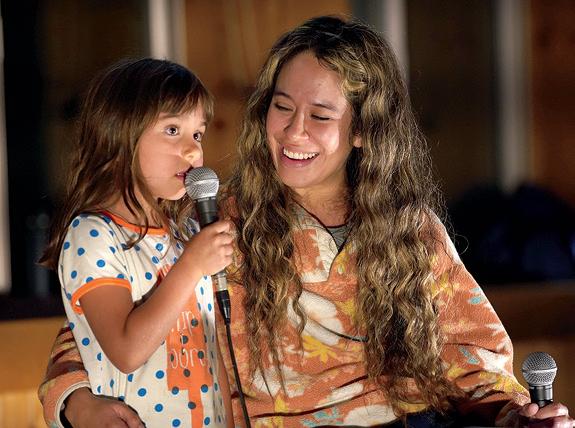
What to know before you go:
• Your child will pick up on how you’re feeling before they go to camp. It’s normal for a parent sending their child to camp (especially for the first time) to be a little nervous, but if your child picks up on that, their time at camp will likely be harder — they’ll experience more worry and homesickness than if you’re positive about a camp experience, while still allowing space to be nervous about trying new things.
• “Call us!” Schnibbe says. “Reach out before camp if you’d like to ask questions, or if you’re anxious and just want to check on your camper. We’ll find a village director or their counselor, or you can talk with your child directly. We’ll work with you to find a time that works for you and try to avoid your child missing out on some really fun
activities. When you talk, keep questions open-ended and positive: ‘Tell me about your three favorite things, or a new thing you tried,’ etc. rather than focusing on negative aspects.”
• Setting expectations with your camper ahead of time can be extremely helpful in their experience at camp. Talk about not being able to use their phone. And about making new friends — what are some things you could talk about or questions to ask? Let them know they can talk with their counselor or another staff member if they need help with something or are sad. Talk about trying new foods, and maybe practice before camp. We try to make foods that most kids will like, but it’s not necessarily the same as they’d eat at home.
• For some campers who haven’t been away from home before, being
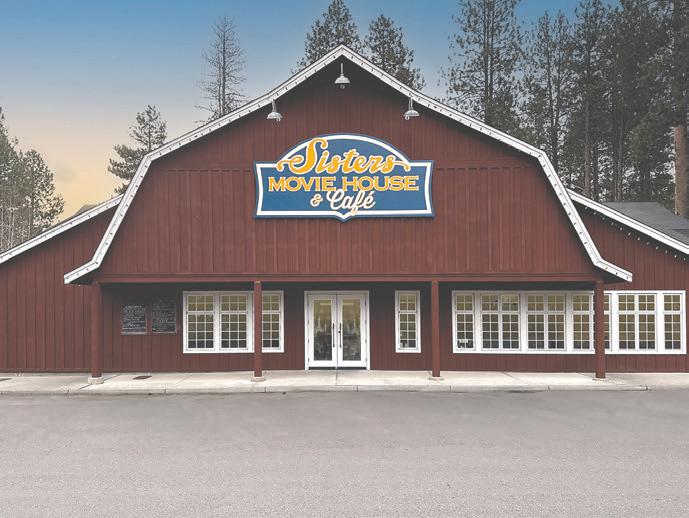

at overnight camp can be hard.
Sometimes it helps to have a camper spend a couple nights away from home in the months leading up to camp, or being willing to recognize that your child may just not be ready for a full week away from you. Sometimes staying at camp just one or two nights is a win.
“Nights can be hard even if days are amazing,” Schnibbe said. “If that’s the case, we’ll give you a call to see how we can best support your child. We recommend staying available in case they need you to come pick them up early, but don’t recommend offering that option ahead of time in case they want to go home as soon as something is hard.”


Rick Retzman, a specially certified companion, walks with Erik Himbert — paralyzed from the mid-chest down — who is utilizing a ReWalk Exoskeleton to regain ambulatory function indoors and on suitably smooth and wide trails in Central Oregon.
BY JIM CORNELIUS

a team
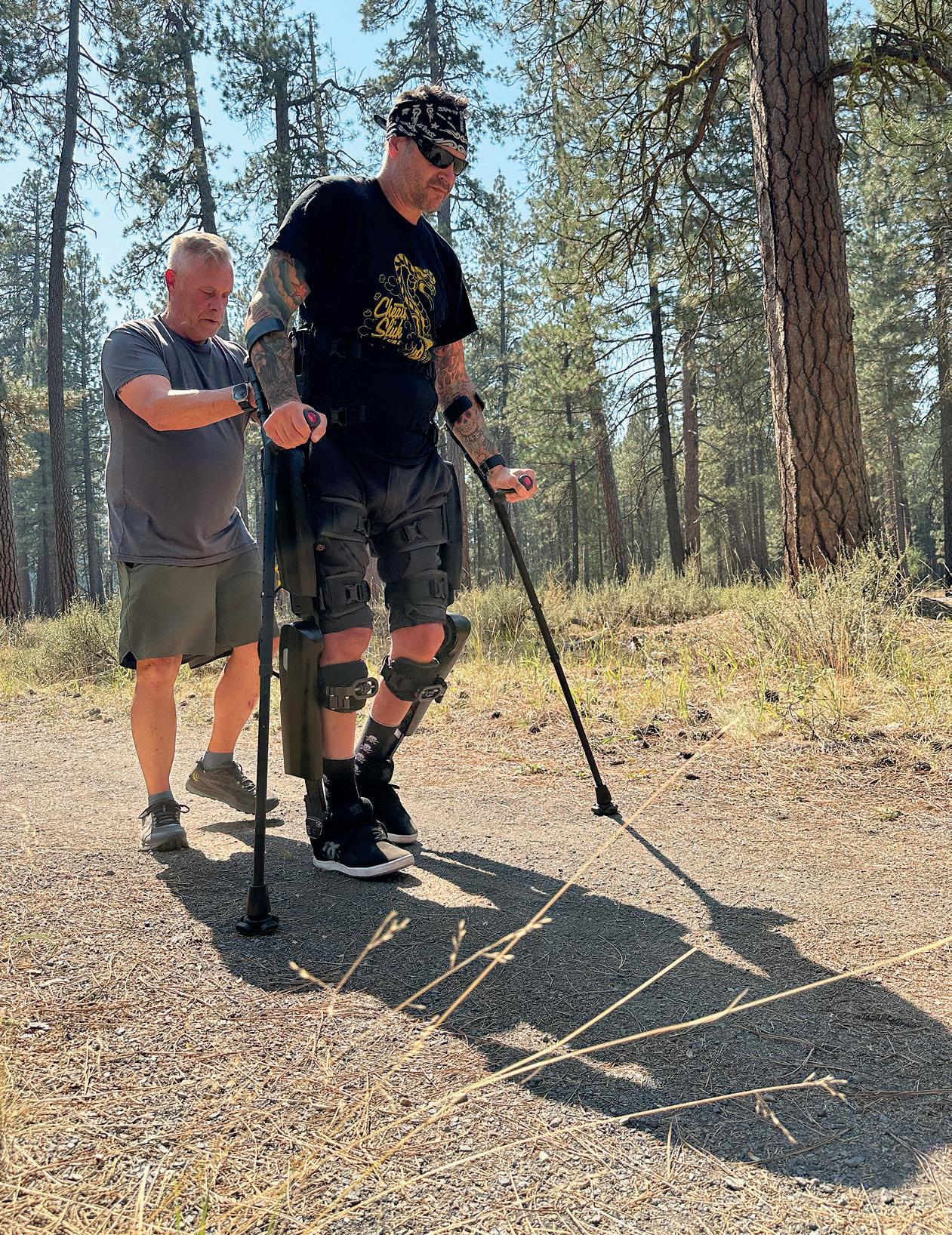


Erik Himbert’s life changed radically in 2009.
Physically dynamic and an avid athlete, Himbert was snowboarding in Wildwood, California, when everything went suddenly and catastrophically wrong.
“I hit the jump at full speed and thought it was powder, and it turned out to be ice,” he recalled in a 2023 interview with The Nugget Newspaper reporter Stuart Ehr. “My board shot out from underneath me. I fell headfirst about 20 feet or so, and landed on my back, and that was it. When I saw my friend’s face… They came up to me and touched my legs and I couldn’t feel my legs, and that’s when I knew it was pretty bad.”
It was very bad. Himbert was left a parapalegic.
Through faith and an exceptionally positive and determined spirit, Himbert was able to turn his focus from what he could not do to what he could do. He continued to work as a music teacher and as a worship leader at his church. But no amount of positive outlook could stave off the toll paraplegia

takes on the body over time.
Constant sitting in a wheelchair or being prone degrades blood flow and bone density, and can leave a person at risk of bacterial infections. It also created significant issues with Himbert’s hips — extreme tightness in flexors and psoas muscles that could often become extremely uncomfortable. Himbert was facing the realization that his health and well-being was slowly but surely getting worse.
His life changed radically again in 2023, when the ReWalk Personal Exoskeleton entered his life.
Himbert had been keeping tabs on technologies that were helping paraplegics improve their quality of life. He saw people like him standing and walking with the aid of exoskeletons. He began to seek out a way to bring such a device to bear on his own deteriorating condition.

“I just reached out to every company and ReWalk is the one who got back to me,” he said. “So, knock on the door… It totally changed my life.”
There were many qualifications required to get Himbert into a ReWalk Exoskeleton, including finding a qualified physical therapist — preferably in Central Oregon — to assess his compatibility with the equipment and to train him in the use of the technology.
Destination Rehab in Bend, an outfit that specializes in returning people to outdoor activities, conducted a threemonth training course to get Himbert ready to take his exoskeleton home.
But Himbert cannot simply climb into the exoskeleton and walk. It requires a “walking partner” to accompany him — and in some cases multiple people. For working with the exoskeleton to be effective at improving his condition, Himbert needs to walk multiple times a week, so it’s a big ask for people to commit to a regular schedule.
Yet that has not been a problem for Himbert. He has a regular team
of people who work with him. On the road in the neighborhood, one person is sufficient to accompany him. Erik’s neighbor Rick Retzman stepped right up to the work.
“For trails, we really need one person in back and two on the sides, just in case,” said Natalie DeLozier, a team member and a nurse and massage therapist.
Himbert and his team get out on suitably smooth and wide trails — often in Camp Sherman — on their Sunday Fun Day, which turns into a social gathering of friends. The team includes Retzman and DeLozier, Geoff Skidmore, Melissa Robertson, and Susan Horstmeyer.
“I’m super blessed by my team. They want to do it.”
They’re not just casual participants. Each had to go through training with Destination Rehab in order to certify their companion capabilities.

For his part, Himbert is always game to go.
“He has an adventurous spirit,” Skidmore said.
“You have to really pay attention to how he’s moving, and how he’s aligning his steps,” DeLozier said. “It’s nerve-wracking at the beginning.”
Companions have to be aware of even minor variations in terrain and anticipate where there might be difficulties in maneuvering. There is a high degree of trust required in the process, because a fall could injure Himbert and potentially damage the exoskeleton.
“A lot of it is on me to be under control,” Himbert said.
It is all a labor of love for those involved, who are friends and thrive in each others’ company.
“It feels like a second family,” DeLozier said.
Trail days keep the team out for about an hour-and-a-half, usually followed by a convivial lunch. Movement is slow and deliberate.
“I think I’ve gone a half-mile or so, which is pretty good,” Himbert said.
The effects of consistent use are apparent and significant. DeLozier, with her medical background, can see improvements in heart and respiratory rate.
“That’s measurable,” she said.
One significant improvement was somewhat unexpected. Himbert had an increasing problem with restless legs, his limbs moving constantly without his control. The condition is uncomfortable and extremely disruptive to sleep.
“After walking regularly, there’s really a significant difference,” DeLozier said.
“That’s really helped with my sleeping, too,” Himbert said. “Being able to sleep through the night for the first time in 14 years was huge.”
The work with his beloved team of companions has enabled Himbert to significantly advance his quality of life. He’s currently part of a six-month clinical study on exoskeleton efficiency. Himbert receives everyday functional “challenges,” such as operating in the kitchen, and reports back on how things went. The hope is “maybe, hopefully, to replace the wheelchair.”
Himbert continues to teach music, a passion that dates back to his early childhood.
“My earliest memories are jamming on my grandmother’s piano I’ve always had a love for teaching deep down inside.” He has a background in all the band instruments, and teaches guitar, banjo, fiddle, cello, drums, and ukulele.
He also likes to work on old cars, and has figured out ways to work around the obvious challenges.
“I’m pretty creative as far as that goes,” he said, “working with my hands.”
He shares his automotive passions and misadventures on his YouTube channel, Godspeed Garage, www. youtube.com/@GODSPEEDGarage. For information on the ReWalk Personal Exoskeleton, visit www. golifeward.com. Destination Rehab can be found at www.destinationrehab.org (see story,page 25).
Destination Rehab takes an innovative approach to physical therapy for people who have experienced neurological conditions ranging from brain and spinal cord injury to stroke to Parkinson’s disease, cerebral palsy, and others.
People in Central Oregon are often outdoor enthusiasts, and many people impacted by neurological conditions seek to restore the best level of outdoor function that they can achieve. Destination Rehab’s three physical therapists work with their clients at outdoor locations, part of the commitment to helping people recover important aspects of their quality of life.
The work can be an adjunct to traditional physical therapy, and as a way to develop new skill sets. Destination Rehab can also act as a
bridge to adaptive sports programs. Activities include outdoor physical therapy, walking practice, rock climbing at a local indoor gym, kayaking and stand-up paddling, recumbent cycling, and more. The program also utilizes some special equipment to facilitate activity. For example, the RT300 functional electrical stimulation cycle, that uses low-current electrical impulses to activate paralyzed or deconditioned muscles and creates patterned movement in the arms, legs, and core.
Destination Rehab’s work seeks to maximize the benefits of neuroplasticity — a brain’s natural ability to improve, change, and grow new connections. Their training incorporates the latest motor control, motor learning, and neuroplasticity practice recommendations to achieve the greatest recovery possible.
Improving fall prevention and balance increases confidence and the ability to enjoy outdoor activities. Functional training builds strength and flexibility for daily activities.

For those who utilize a wheelchair, training in maneuvering skills enhances quality of life. Skills like picking up objects from the ground, wheeling in all directions, opening doors, tight turns, going up and down curbs, navigating ramps, getting in and out of a car, and getting up off the ground are part of Destination Rehab’s training programs.
Destination Rehab was tapped as the qualified physical therapist to help Erik Himbert become proficient with the ReWalk Exoskeleton that has transformed his life. There was a series of supervised steps that were necessary in order for Himbert to be able to use his exoskeleton independently. The team of people who act as companions for Himbert’s trail excursions (see story, page 22) received training from Destination Rehab to prepare them for the role.
By Jim Cornelius

Jean Wells Keenan was a young single mother running a small quilt shop in Sisters in the summer of 1975. She had been teaching junior high school home economics, and had expanded her teaching to include adults and quilts.
“When I opened the store, it was because I needed a classroom,” she recalled.
That was May, 1975. In June, fellow shopkeeper Cathi Howell approached her about hanging up some quilts for a summer festival.
“I went to Mom’s house and just loaded up the car with family quilts,” she recalled.
Another quilter named Sarah Butler hung up some quilts, too. The display garnered some attention, and it made for a fun summer day in a tiny town.
“Then I thought, ‘well, maybe I should do it again,’” Keenan said.









SPECIAL EVENT TICKETS ON SALE NOW AT WWW.SO QS.ORG A Town C overed in Quilts: A 50-YEAR RETROSPECTIVE with Jean and Valor i Wells, presented by Betty Gientke Friday, July 11, 6:30-8:30 p.m. Sisters High School SAVE IT FOR SUNDAY! with Karen Stone Sunday, July 13 Walking Tours 9 a.m. & 1 p.m. Lecture 10 a.m. FivePine Lodge Conference Center Sisters Outdoor Quilt Show is always the second Saturday in July. SO QS is a 501(c)(3).

In that second year, there were 50 quilts on display on downtown Sisters storefronts — and a major event was on a roll.
That roll has continued for 50 years.
“It was sharing what you liked to do,” Keenan said, “about being able to share without judging.”
That ethos continues to this day, as the Sisters Outdoor Quilt Show (SOQS) has become a major Central Oregon event, drawing thousands of people to the region at the beginning of July for classes and events, with volunteers transforming Sisters with over 1,000 quilts on display on the morning of the second Saturday in July.
SOQS Executive Director Dawn Boyd affirmed the foundational ethos of the show.
“It’s not juried, so we celebrate every level of quilter,” she said.
The show has a tremendous amount of impact. For many downtown Sisters merchants, the week of SOQS makes their summer. And an astonishing number of people have moved to Central Oregon because they were drawn by the Quilt Show and the creative culture that has been built around it.
Keenan recalls teaching a class of 20 people — 10 of whom subsequently moved to Sisters.
Success can put a sheen on things that makes us forget that it comes from hard work. Keenan’s shop, Stitchin’ Post, was her livelihood — but she knew early on that she didn’t know enough to make a go of it.
“I knew I needed to figure out how to be a businesswoman,” she said. “I didn’t want to move the kids away from school in Sisters. We just did what we needed to do. It wasn’t always easy.”
In 1983, Keenan talked her
way into Central Oregon Community College’s small business mentorship program.
“I just loved that class,” she recalled. She made a discovery that was on the order of an epiphany: Operating a business could be as creative as the quilting at which she excelled. She applied herself to making both her business and the show a success.
Keenan and a team of volunteers ran the Quilt Show at the same time that Keenan was developing the Stichin’ Post into a major hub for the quilting community. All together, it was a lot of work.
“I felt like I had a tiger by the tail,” she said.
In 2003, SOQS became a nonprofit, under the guidance of volunteer-turned-executive-director Ann Richardson.
“Ann really developed the whole nonprofit thing,” Keenan said. “We had to learn how to do it. We were clueless. But it was a major turning point for the show.”








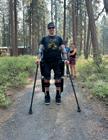
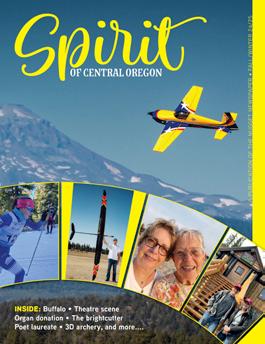

Boyd notes that Keenan’s business savvy has made a mark on the evolution of SOQS.
“You find people who are really good at the creative side, and you find people who are really good at the business side,” she reflected. “She’s good at both. I’ve never heard her say, ‘This is the way we’ve always done it.’ And that’s true with the business and that’s true with her quilting. And that’s rare.”
Through the massive growth of the show, organizers — almost all volunteers — have avoided commercialization and emphasized maintaining a hometown feel.
“One of the things we have heard time and time again is how welcoming everybody is,’’ Keenan said.
“The growth has been so organic,” Boyd said.
Boyd reports that registration is outpacing a “normal” year as people are eager to participate in the 50th anniversary of the iconic event. The event is not ticketed and is thus free to the public — but Boyd notes that it is not free to produce. SOQS welcomes business sponsorship and community grants, and has an active cadre of “Friends of the Show” donors. Information on supporting SOQS may be found at https://www.soqs.org/donations.
Boyd herself looks forward to one aspect of the show that she enjoys every year — which is liable to be heightened with the anniversary: “The look of joy on [Jean’s] face as she sees other people enjoying themselves.”
“A Town Covered In Quilts: Presented by Betty Gientke” Friday, July 11, 6:30–8:30 p.m.
Sisters High School, 1700 W McKinney Butte Rd.
Those attending the 50th-anniversary celebration event will commemorate the rich history of the Quilt Show through a sit-down interview including live Q&A with Jean Wells Keenan and her daughter Valori Wells, herself a noted businesswoman and fabric designer. The event will include a live auction featuring exclusive, handcrafted quilts inspired by Jean and created by Quilter’s Affair instructors. Guests will enjoy an evening of inspiration in a presentation that highlights the people, stories, and milestones that have shaped SOQS into what it is today.
Tickets are available at www.soqs.org/2025events










— By Matt Van Slyke —

Six months ago, Bend native Seth Davies earned the payday of his career, winning $3,206,000 as champion of the Super High Roller Bowl IX in North Cyprus.
The buy-in for the global No-Limit Hold’em event? $300,000.
A week later, in Barcelona, he won nearly $1 million. A first-place finish in October in his new home base of Las Vegas earned Davies $1,500,000. He returned from the Bahamas in December $443,000 richer. By midMarch, he had won $290,500 more from events in South Korea.
Davies is an elite player, a World Poker Tour champ who has earned more than $32 million.
Twenty years ago, he was sharing a bankroll with his brother, playing lowstakes online poker.
“In 2003, the poker boom started when an amateur player won the World Series of Poker Main Event from
an online qualifier. It was on ESPN, and everyone said, ‘This guy did it. Why can’t I do it?’” recalls Davies.
A teenage baseball star, Davies graduated from Mountain View High School in 2007 and moved to Las Vegas to play for College of Southern Nevada.
“I had three surgeries trying to fix my throwing arm. When I was recovering from the surgeries, I obviously couldn’t practice baseball, so I spent that time playing poker,” he explained.
“I had one foot in the door in baseball and one foot in the door in poker, but by 2010, my body was kind of done with baseball, and at that point I was making $5K a month or so playing poker, so I went full-time in poker and have been full-time for about 15 years now.”
According to poker database The Hendon Mob, Davies is ranked top25 on its All Time Money List: 24th in
the world, 15th in the U.S., and #1 in Oregon, where poker holds a unique distinction.
“Arguably the cheapest poker in the country,” said Lane Jacobson, a parttime poker player from Sisters. “You pay at the door. You’re paying a flat fee to play versus most other areas, where you have a rake that comes out of every pot, and the more you play, the more you pay.”
Jacobson and others thank professional poker player Angela Jordison for that.
“It all started from this bar I had in Redmond,” explained Jordison, a Crooked River Ranch resident who once owned The Sky Box, the first poker room in Central Oregon. “I’m the one that found the old ordinance for social gaming, went to the city, and said, ‘I need a license for this,’ so they gave it to me. We became a pretty integral part in bringing poker rooms that





















spread all over the state. Now they’re all over the country, because Texas is following that model as well.”
Jordison, a respected poker pro with more than $1.6 million in live-tournament earnings, has been involved in poker in Central Oregon for years. She splits her time between Terrebonne and the Midwest, which hosts more big tournaments.

Jacobson and Jordison are part of a study group of players with Pacific Northwest ties.
In 2022, Jordison was crowned Global Poker Index Breakout Player of the Year and named runner-up for both Mid-Major Player of the Year and Female Player of the Year. Last August, Jordison won the Horseshoe Council Bluffs Summer Special in Iowa, and a week later claimed her first Mid-States Poker Tour main-event title, besting 860 players at Ameristar East Chicago for a career-high $161,513 prize.
“Moving from cash games at the Bend Poker Room to the big stage of Hold‘em tournaments has been an adjustment. In the beginning, I lacked confidence and was intimidated by the big names of poker. Every deep run the last three years has made me realize I belong. Coming off of backto-back wins makes me excited for the future,” Jordison said.
Jacobson recalls cheering her on from Sisters: “I had to go to sleep while she was at the final table but I’d told her I expect to wake up to a winner’s photo, and sure enough!”
His poker origin story goes way back.
“My dad owned a card room when I was growing up. I have been playing literally as long as I can remember,” Jacobson said. “The majority of my life lessons and analogies and all that stuff that I was exposed to growing up were through a poker lens.”
“We’re all in a group text together; you finish a hand and then you text the group, ’I was in this position with these cards, here’s the hand history,’ and then we give feedback or say what we would have done,” Jacobson said. “We also get together online and run solvers, which are mathematical computer models based on analyses of hands.”
Software that can model a poker hand and all the factors that go into how to play it, solvers have revolutionized poker training and research. Davies put it in sports terms:
“If you play perfect defense and they never score on you, you can never lose,” he said. “In poker, it’s not that simple, because when you’re playing real games against real people, you also need to play offensively to try to exploit your opponents’ weaknesses. But the bedrock strategy is rooted in solver work, this kind of bulletproof, defensive baseline strategy.”
Jordison sees today’s players as smarter than ever.
“The big change I’ve seen is the way players study off the felt,” she said. “Before, you showed up, you played, and you either had a natural ability or not. One of my biggest strengths is that I grew up on the felt, then added the solver work. That combination, I think, puts me ahead of the field a lot.”
For Jacobson, poker is a hobby. He had a deep run in the World Series
of Poker Main Event in 2023, placing 552nd out of 10,000+ entrants and earning $32,500, but could not participate last year as he had business to attend to: he owns and operates Paulina Springs Books in Sisters.
“I have the bookstore, that has gone really well, and part of that I credit to games in different forms. Making decisions and being willing to bet on yourself, or have confidence in your decisions, are things that I find very valuable,” he said.
His poker group with Jordison boasts “some of the best poker players, legitimately, in the world,” Jacobson said. “I went to stay with them for a few weeks in Vegas and just fit in really well.”
“We actually share a condo in the summer for the World Series,” said Jordison.
When asked whether their group chat has a name, Jacobson chuckled and blamed Jordison.
“We are the ‘Travel Bloggers,’ because the place where we stayed was supposed to bring a rollaway bed for me to sleep on in the living room. After days of asking, they still had not brought it, so Angela went to the lobby and said, ‘I’m a travel blogger and I am so frustrated that I’m gonna post a negative review on my travel blog, and I have 100,000 followers.’ The rollaway was there within 30 minutes,” he laughed.
Central Oregon’s poker community may be small but has made a lasting impact. From Jordison’s trailblazing work to Jacobson’s sharpened skills to Davies’ upper-echelon abilities, these three prove that serious strategy and good humor can inspire at the table and beyond.

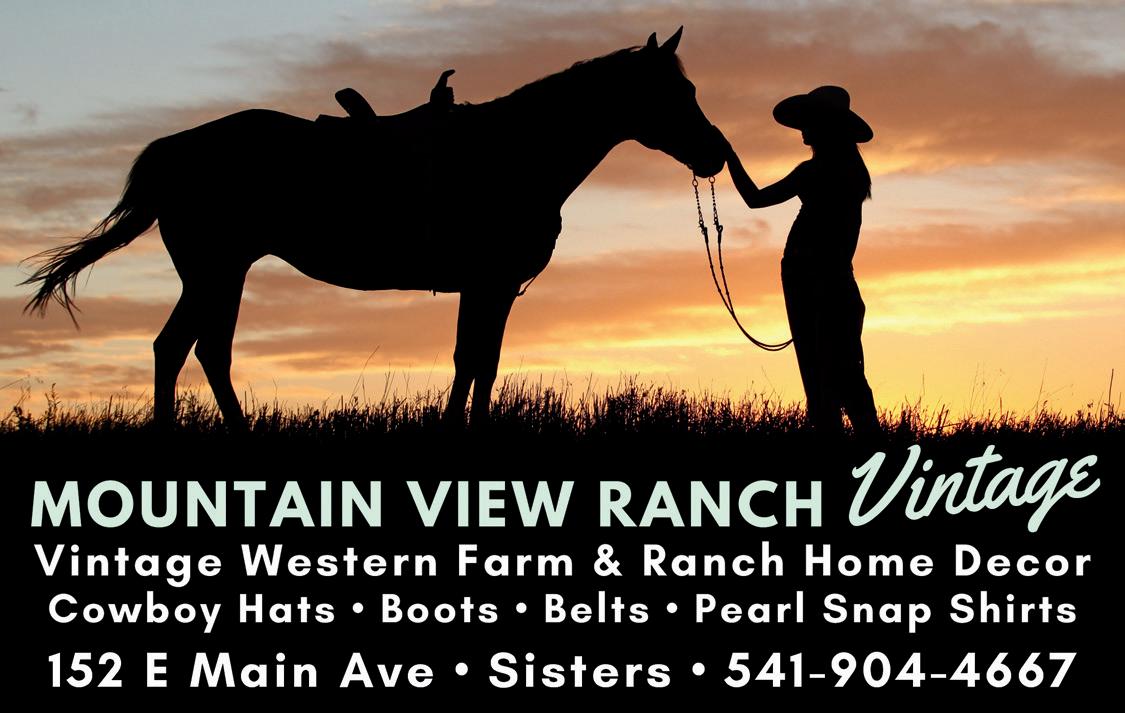
— By Maret Pajutee —

The wild expanse of forests we enjoy in the foothills of the Cascade mountains are not there by chance. It took concerted thought for the future when, in 1893, Congress established the precursor of National Forests, the Forest Reserves.
Forest land was being developed fast as the Government encouraged settlement of the West. The Homestead Act of 1862 gave 160 acres of free land to any citizen over 21, with certain other requirements. The Timber and Stone Act of 1878 further allowed settlers to buy another 160 acres of non-mineral land for $2.50 an acre to supply building materials for their ranch or farm. Many homesteads failed to thrive and lands were sold to speculators or timber companies. Road companies acquired thousands of acres of free land and sometimes failed their promise to build roads in exchange.
The new Cascade Forest Reserve bounded four million acres from the Columbia to nearly the California border. The Southern portion went from Crater Lake to the Three Sisters and McKenzie Pass. First on the scene was a ranger who would become a legend. Cyrus James Bingham, was known as “Cy,” and “The Mountain Man of the Cascades.”
Cy Bingham was born in Michigan in 1870. He came west on a train at 20 to work at the Bohemia Mines. He married adventurous Connie Boggan and in 1903 was hired by the Government to be the first Ranger for the South Cascade Forest Reserve. He brought Connie and a pack string of five horses. Reports say they traveled without a tent for the first three years and
could pack their entire camp in an hour and a half and be gone.
A 1980 history of the Malheur National Forest quotes Cy on those early years:
“That was the best five years of my life, I laid up more real money. I received $75 a month. There was all the deer I wanted, fish everywhere, game aplenty and one season Mrs. Bingham canned 150 jars of wild blackberries. We traveled the mountains making trails and would go all summer and but never meet but a few people.”
He had to supply his own horses, saddles, tools, and food.
Descriptions of Cy Bingham are supersized. They note his imposing stature, including weight, height, shirt, hat, and shoe size. Also mentioned are his industrious cabin building, and fame as a barbecue master. But his most famous legacy was his habit of creating dendroglyphs (or arborglyphs), tree carvings, at his favorite campsites across the Cascade mountains. This left a record of his route, with his name, date, and sometimes other details.
These forest mementos are known as “Cy Bingham trees” and mark his travels from long ago. Maybe 20 or less still survive today in remote places that have not burned or been logged.
Cy was reportedly a very good ranger. Perhaps wrong doers were intimidated by his size but he was also reportedly fair and just. He carried a six shooter and wore a giant hat for a giant job. He was a timber cruiser, fire lookout, firefighter, trail builder, and peacemaker. The high country was overgrazed, and in the disputes between cattle and sheep men, livestock and people died. Cy mediated the armed conflicts during the Oregon Cattle and Sheep War, and did body retrieval when that didn’t work. The creation of grazing allotments helped end the war, but Cy had to make it




happen, they say, without ever drawing his firearm. He wrote poetry about lakes.
In 1905 after various scandals, the administration of the Reserves changed from the Department of Interior to the Department of Agriculture. New leader Gifford Pinchot chose only the best forest rangers to remain on his staff, including Cy, who continued his work on the new Deschutes National Forest. He laid out the scenic Skyline Trail along the crest of mountain country, and during quiet times, built cabins. But his trees remain the most famous trace of his hands working wood. “Blazes on the Skyline” (Cox 1988) describes the Cy Bingham trees that have survived. None are known to exist on the Sisters Ranger District, but several are found near the Three Sisters and McKenzie Pass. Cy rose to the post of Malheur Forest Supervisor from 1907 to 1920. He then resigned and served as sheriff of Grant County for 12 years where he was called “The Biggest Sheriff in Oregon” at over six feet tall and 300 pounds. He was said to have made more arrests in seven years than in the previous twelve and continued as arbitrator of wrongdoings and range wars, through many years of Prohibition (1920-1933).
A Salem, Oregon, newspaper provides an account of Cy’s famous barbecue skills at a charity event in 1929. He was said to have been perfecting the art of BBQ for 40 years. His particular requirements included the construction of a fantastically huge pit, lined with 1,500 fire bricks, 4,000 regular bricks, and 13 yards of soil. He then


needed a three-day supply of beer as he tended the fires to create the perfect coals to roast five cattle, termed “beeves” in the article. They served up 300 gallons of coffee and used 20 pounds of beans for pork and beans.
His poem to an old friend, circa 1925, looked back on life in wild forests. “Them days are gone forever, when a ranger’s life I led, And I camped beneath those hemlocks, used fir boughs for my bed, when I used to spear the dollys, shoot the black tail from the licks, and keep tab on the horse bell from the glades along the creeks.” He asks, “Old man, where have you been since we roamed this land, and when I asked, what does this mean, so many camps I see and autos parked, where once we tied our horses to the trees…”
In 1932 Cy fell into ill health and resigned as Sheriff. He and Connie moved in with their children in California and he passed away in 1937 at the age of 66. They brought him home to be buried in an old outpost in Canyon City in Grant County.
Next time you are out in the mountains keep your eyes peeled for an old tree with strange markings. Then look closely. Did a cougar scratch it or is it a long lost message from Cy? Maybe you will find an undiscovered Cy Bingham tree, a secret of his long-ago alpine haunts, guarded now by nutcrackers and the hawks.


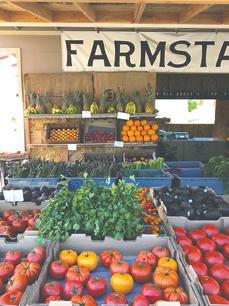













Farm-to-table eating appeals to thoughtful diners who appreciate the freshest foods, grown sustainably. What happens when Central Oregon food producers bring the table — and the diners — to the farm?
Shaded from the sun by curling vines, a friend and I luxuriated in a lovely brunch at Rainshadow Organics, every ingredient grown or raised on the premises. Highlights included the Farmer’s Garden Benedict and a cake of elderberry, lemon, and olive oil.
Inspired by Michael Pollan’s influential book “The Omnivore’s Dilemma,” farmer Sarahlee Lawrence started growing vegetables on the family land where she grew up, between Redmond and Sisters.
“Then we added animals, then grains and dairy and eggs,” she told us. “The farm became really grounded in the culinary. Lots of farmers don’t
eat what they raise.” She loves to eat Rainshadow’s food and share it with the public.
“To actually be here and take a tour and see everything growing, and then realize that all the food on your plate is from this farm — it’s powerful,” she says.
“We started doing long-table dinners in the garden, just a handful in the summer,” says Lawrence. As interest grew, Rainshadow expanded. “We have a lot of food to cook, so we built a commercial kitchen and a farm stand.”
In general, people’s biggest environmental footprint is our food: what we eat every day, how it’s grown, and where it comes from, according to Lawrence. “I care a lot about the environment,” she explains. Lawrence earned her Masters degree in Environmental Science and has worked in river conservation.
Lawrence’s regenerative practices have vastly improved the typically poor Central Oregon soil she started out with. Not only does this provide greater yield, taste, and nutrition in vegetables, it also saves water. “It’s very difficult to raise food in Central Oregon,” she adds.
Another local, Audrey Tehan, started a farm on her family’s land on the edge of Sisters. The founder and executive director of nonprofit Seed to Table, she leads an organization with a wide reach. Its robust farm education program serves area students in schools and via farm field trips, along with on-farm summer camps.
The organization also leads and manages Sisters Farmers Market, donates veggies to food pantries, and offers a sliding-scale produce share. Retiree Beth Eckert says participating makes her feel much more sustainable.


“When you get older and you have a disability, your options are usually unhealthy foods. This is a true, amazing gift and opportunity for a lot of us.”
Seed to Table’s annual Fall Harvest Dinner takes place on the farm, with long tables under open skies and towering pines. We savored a variety of plant-based dishes, along with food for omnivores, from lamb dishes to appetizers and desserts. Wine, music, and community flowed as diners toured the property and explored the farm’s bounty, prepared by FEAST of Redmond.
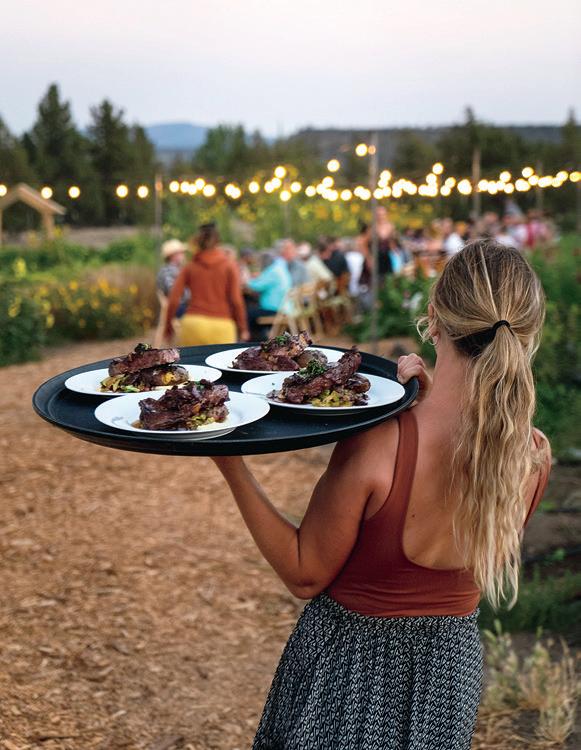
Chefs
Another nonprofit brings Central Oregon farmers and eaters together: Locavore. The organization’s “Meet Your Farmer” dinner series takes place in restaurants, where local farmers and ranchers are matched up with local chefs. The annual fundraising gala is a more formal affair, featuring a farm-to-table dinner and the “Infamous Dessert Dash.”
PHOTO BY JAVAN WARD
In Aspen Hall in charming Shevlin


Park, a recent dinner raised funds for the “Farm to Warm Springs” project. The menu centered on locally raised bison from Pine Mountain Ranch, located between Bend and the Oregon Badlands. A fire-roasted tomato sauce accompanied vegetables from Around the Bend Farm and other local sources, along with a foraged elderberry


dessert. Savory Spice donated ingredients as well.
The farm grows food for residents of the Confederated Tribes of Warm Springs reservation. “General food access is pretty limited in Warm Springs and there is not much growing on-site,” explains Isabel Kiefert of Around the Bend Farms. In addition to its one-acre urban farm in Deschutes River Woods, the nonprofit has just acquired a fouracre farm in Madras, half in-ground farming and half hydroponic.
“We will just be able to get it to Warm Springs a lot quicker so the food is more fresh,” she says of the Madras expansion. The farm is partnering with schools and early childhood resources to teach young kids about growing food and install a hydroponic tower on-site. Savoring fresh local food in the great outdoors and at fundraisers tastes fresh, provides novel dining experiences, and supports the Central Oregon food system. Bon appétit!








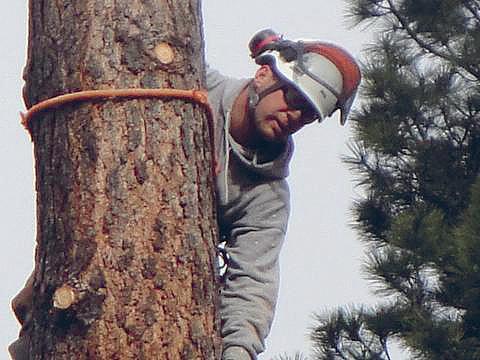












•
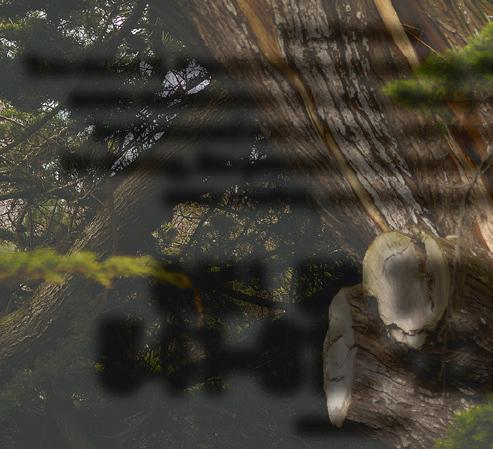


Beyond the restaurant, beyond the home kitchen, Central Oregon farms and organizations create special dining experiences centered on locally raised and harvested foods. A sampling of the possibilities:
Locavore’s mission: to promote local food sustainability and community wellness within Central Oregon. An essential hub for area growers, ranchers, and eaters alike, this nonprofit organization produces the Meet Your Farmer dinner series and an annual gala. Locavore Market on Third Street in Bend features fresh produce, handcrafts, and an impressive array of freezers stocked with locally ranched meats.
centraloregonlocavore.org
For 30 years, Culver residents have been netting fresh crawdads (crayfish) at nearby Lake Billy Chinook, sharing their lobstery goodness at this annual festival. Potatoes and freshly shucked corn fill out the menu, plus a parade, bingo, beer garden, vendors, and live music. cityofculver.net
This delicious annual event takes place on the farm run by nonprofit organization Seed to Table, which feeds local residents of all income levels, produces Sisters Farmers Market, and provides farm education for Central Oregon students. Tickets are rarely available for long; become a donor or join the online newsletter for a chance to participate. seedtotableoregon.org
Raising funds to grow vegetables for Warm Springs residents, Around the Bend Farms presented a recent dinner at Aspen Hall on the grounds of beautiful Shevlin Park in Bend. Future fundraising dinners will continue to feature locally sourced foods.
aroundthebendfarms.org
Sunday brunches and on-farm dinners, scheduled selectively in season, feature Rainshadow’s own sustainably raised produce, eggs, grains, and ranched meats, prepared by in-house and guest chefs. Yearround produce and meat shares also available. Sign up for the newsletter to be notified; events sell out quickly. rainshadoworganics.com
The snow-capped Three Sisters mountains stand guard over Sisters Country’s pine forests and High Desert. Known by many as simply South, Middle, and North Sister, they’ve also been called Faith, Hope, and Charity for decades. A vineyard of the same name offers wine tastings with limited menu pairings, charcuterie boards, salads, smoked salmon appetizers, and pizzas among them. Special events feature music and more.
faithhopeandcharityevents.com/ tasting-room
HDFFA, High Desert Food & Farm Alliance, connects growers, shoppers, farmers markets, and other Central Oregon local food resources. Try the High Desert Food Trail, which they promote in collaboration with Travel Oregon, hdffa.org/hdft.
Newspapers and publications often feature hyper-local dining experiences along with restaurant listings and reviews. For Bend, see The Source Weekly , bend source.com, Savor , bendmagazine. com/savor-dining-guide, and Bend Bulletin/Go! , bendbulletin.com. The Spokesman serves Redmond, redmondspokesman.com).
Sisters is covered by The Nugget Newspaper , nuggetnews.com, and Sisters Oregon Guide , sistersoregonguide.com. Madras features The Madras Pioneer , madraspioneer. com, Warm Springs offers Spilyay Tymoo/Coyote News , wsnews.org, and Crook County has the Prineville Review , prinevillereview.com. La Pine events can be found online at lapine.org/community-calendar. Chambers of Commerce in Central Oregon towns sometimes help produce or promote local food events, as do some Destination Management Organizations (DMOs). Regional umbrella DMO Visit Central Oregon provides an overview of upcoming events at visitcentraloregon.com.
Would you like to see your favorite dining experience in a future issue of Spirit of Central Oregon? Contact writer tiffany@plazm.com.













“We continue to get praise from our neighbors on our new driveway. The BANR crew is professional, kind, and thoughtful, leaving a clean worksite behind each day. We have already recommended BANR to others!”
— Jeff & Theresa R., Bend

• Clearing & removal of trees, stumps, brush
• Sewer, water, electrical, and drainage lines
• Foundation excavation and backfill; site grading
• Curbs, driveways, patios, and RV pads




• Gravel and asphalt driveways; concrete sidewalks
• Rock and border retaining walls Gravel and



